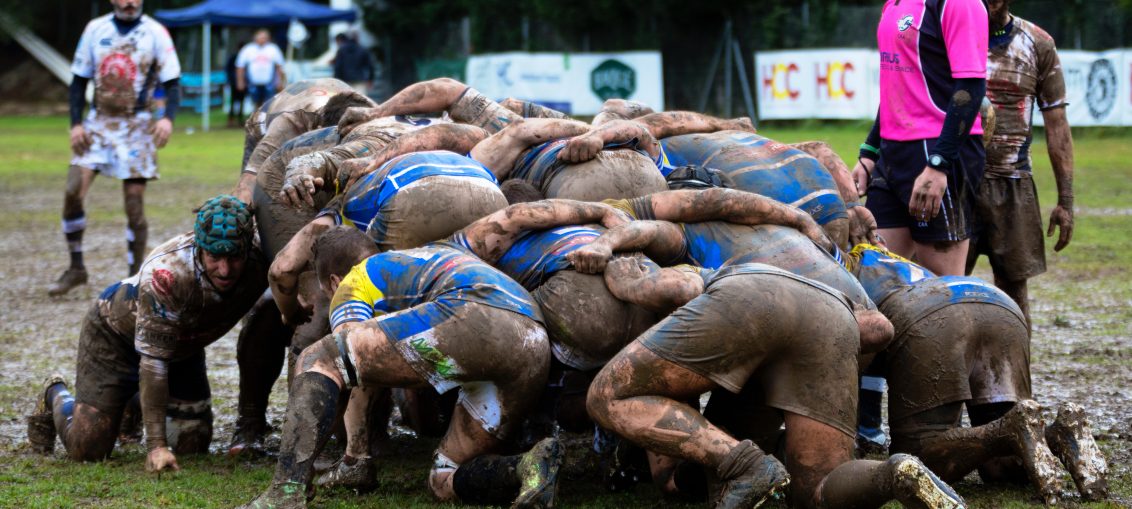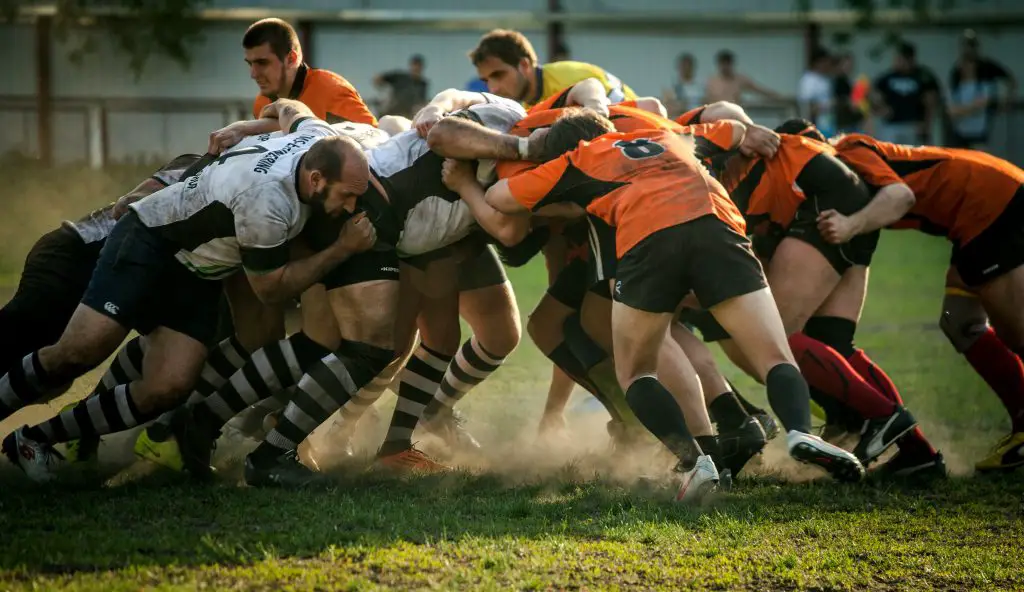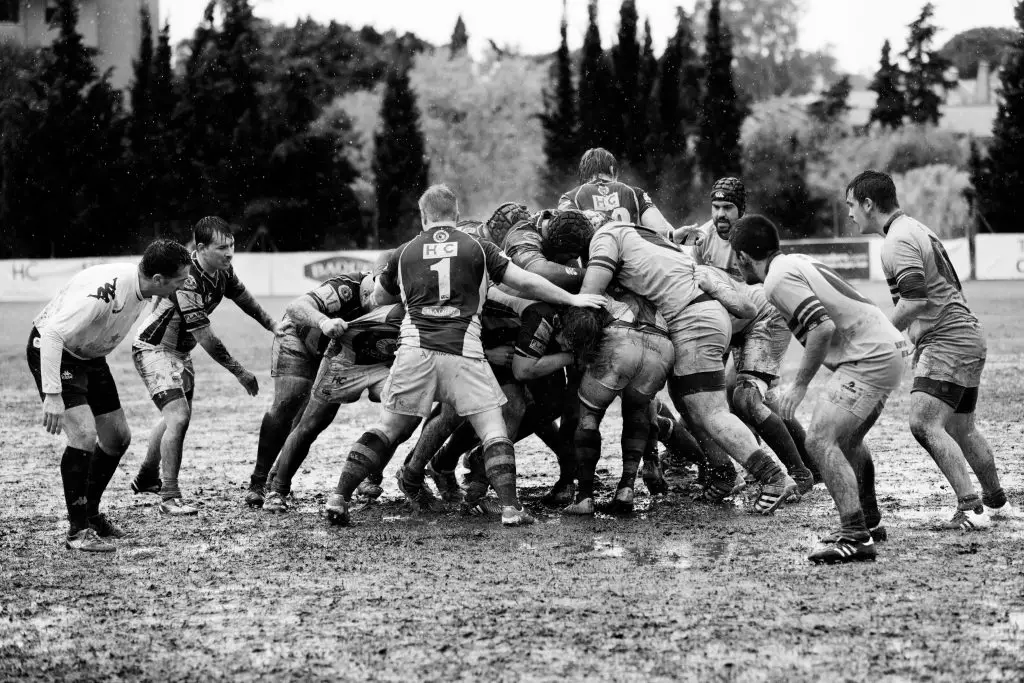
You may have heard the term ‘scrum’ used when talking about rugby. We’ll explain exactly what that means, and highlight the important rules of the rugby scrum.
What is a scrum in rugby?
A rugby scrum is a method of restarting the play and is awarded following numerous actions within the match. A scrum is similar to the line of scrimmage in American Football in that there are two sets of designated players attempting to drive each other back. In rugby the scrum is formed with each team having eight designated forwards who bind together in three rows in a crouched position with straight backs.

The front row of each team interlocks their heads with the opposing front row prior to referee calling “crouch, bind, set” to initiate the engagement of the two sets of players.
The scrum and the tackle are the two really contentious areas of the game. If you get those two aspects right, most rugby matches will work in your favor.
-Alan Lewis
The scrum half of the team who were awarded the scrum then rolls the ball down the tunnel between both sets of front rows who can then compete for the ball trying to hook it with their feet (hence the term ‘hooker’) to the back of the scrum (their teams number eight). Essentially, the forwards are competing to “snap” the ball back to their team to create an attacking opportunity. The number eight can either control the ball at the back of the scrum whilst his team drives forward, pick it up and run himself or let the scrum half take the ball from between his legs.
Rules of the rugby scrum
Each position has specific roles within a scrum and there are rules regulating what can and cannot be done. These rules are in place for the safety of the players through maintaining a stable scrum. The key area for ensuring safety within a scrum is with the front rowers, to ensure the well-being of both sets it is essential for the engagement to be square on, with angled driving banned. Additionally, the front row players cannot pull their opponents, deliberately collapse the scrum or twist their bodies to gain an advantage.
The back row, including the two flankers, must remain bound to the scrum until the ball has left. This means they must keep at least one arm up to the shoulder, in contact with the scrum before leaving to apply pressure to the opposition.

Similar to American Football, a scrum should be parallel to the goal lines when the ball is feed between the front rows. This feed (made by the scrum half) should be fed in a single movement down the center of the tunnel.
When are scrums awarded?
A scrum can be awarded following various different actions within the period of play. If the team in possession of the ball drops it or passes it forwards, then a scrum is awarded to the opposition if there is no advantage.
Additionally, a scrum is awarded to the team in possession of the ball if it becomes trapped within a ruck or maul. A penalty is awarded when a more serious offence occurs and scrum can be chosen as one of the options to restart the play.
The rugby scrum is defined by Law 19 of the Rugby Union Laws of the Game
Who pushes the most in a rugby scrum?
All players in a rugby scrum are required to push with maximum effort, but the two players in the front row known as the props typically exert the most force. The prop’s primary role is to provide a strong and stable foundation for the scrum, and they must engage with the opposition’s props in a controlled and balanced manner to avoid collapse or injury.
Props are typically the strongest players on the team and must have excellent technique, strength, and endurance to withstand the pressure of the scrum. The other six forwards in the pack also contribute to the push and provide support to the props, with the hooker playing a key role in striking for the ball once it is fed into the scrum. However, in terms of pushing force, the props are generally considered to be the most important and powerful players in the scrum.
